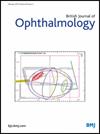微生物取样在处理急性术后细菌性眼内炎方面价值有限:英国的一项多中心研究
IF 3.5
2区 医学
Q1 OPHTHALMOLOGY
引用次数: 0
摘要
目的探讨微生物检测对急性眼内炎术后临床治疗的影响。方法对英国五所高等教育中心进行多中心回顾性队列研究。术后出现急性眼内炎的患者至少随访4周。主要结局是治疗方法改变的比例(定义为在初始治疗后4周内进一步玻璃体内抗生素治疗和/或进一步手术干预)和这种改变的原因。结果189例患者共190眼。患者术后5天就诊(IQR 3-10)。取样主要通过玻璃体单独取样(80/190,42%)或玻璃体和前房同时取样(84/190,44%)。半数以上培养阳性(107/190,56%),仅分离出细菌性病原体。具有现有抗生素敏感性数据的培养阳性病例证明对至少一种经验性玻璃体内抗生素的体外敏感性。76只眼(40%)在初始治疗后4周内发生管理改变。46%(35/76)的患者在初始治疗48小时内进行了这些额外的手术。主要原因是缺乏临床改善(46/ 76,61%)或临床恶化(18/ 76,24%);这些变化都不是由培养或敏感性结果引起或引导的。结论微生物取样在该系列中临床应用有限。对于疑似急性细菌性眼内炎的患者,如果微生物取样可能造成治疗延误,应考虑立即玻璃体内抗生素治疗,而不取样,以优化视力结果。如有合理要求,可提供资料。本文章由计算机程序翻译,如有差异,请以英文原文为准。
Microbiological sampling has limited value in managing acute postoperative bacterial endophthalmitis: a multicentre study in the UK
Aims To determine whether microbiological testing impacts clinical management in acute postoperative endophthalmitis. Methods Multicentre retrospective cohort study encompassing five tertiary centres in the UK. Patients presenting with acute postoperative endophthalmitis with at least 4 weeks follow-up were included. The main outcome was the proportion with a change in management (defined as further intravitreal antibiotic therapy and/or further surgical intervention within 4 weeks of the initial treatment) and the rationale for this change. Results 190 eyes of 189 patients were included. Patients presented at a median of 5 days postoperatively (IQR 3–10). Sampling was predominantly obtained via vitreous tap alone (80/190, 42%) or with both vitreous and anterior chamber tap (84/190, 44%). Over half were culture-positive (107/190, 56%), and only bacterial pathogens were isolated. Culture-positive cases with available antibiotic sensitivity data demonstrated in vitro sensitivity to at least one of the empirical intravitreal antibiotics administered. Seventy-six eyes (40%) had a change in management within 4 weeks of the initial treatment. These additional procedures took place within 48 hours of initial treatment in 46% (35/76) of patients. The main reasons were a lack of clinical improvement (46/76, 61%) or clinical deterioration (18/76, 24%); none of these changes were prompted or guided by culture or sensitivity results. Conclusions Microbiological sampling was of limited clinical utility in this series. In patients presenting with suspected acute bacterial endophthalmitis, if microbiological sampling might pose any delays to treatment, consideration should be given to immediate intravitreal antibiotic treatment without sampling to optimise visual outcomes. Data are available upon reasonable request.
求助全文
通过发布文献求助,成功后即可免费获取论文全文。
去求助
来源期刊
CiteScore
10.30
自引率
2.40%
发文量
213
审稿时长
3-6 weeks
期刊介绍:
The British Journal of Ophthalmology (BJO) is an international peer-reviewed journal for ophthalmologists and visual science specialists. BJO publishes clinical investigations, clinical observations, and clinically relevant laboratory investigations related to ophthalmology. It also provides major reviews and also publishes manuscripts covering regional issues in a global context.

 求助内容:
求助内容: 应助结果提醒方式:
应助结果提醒方式:


